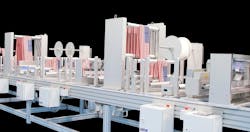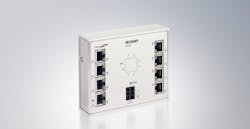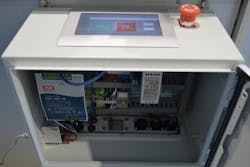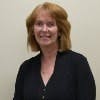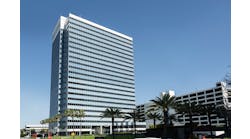Some assembly required: Flexible controls enable building-block approach to machine design
Flexibility has been central to AZCO since its inception. President Andy Zucaro started the company in his basement 37 years ago with a pencil and a drawing board propped on two cabinets.
Through innovation in custom machine design, the company grew steadily and now employs 35 people. It serves a range of customers from startups to Fortune 100 companies, primarily in the United States in medical-device manufacturing, converting and packaging, as well as machine builders that serve these markets.
Figure 1: The Building Blocks of Automation from AZCO offers a variety of standard modules for rolling, laminating, cutting and other functions to suit end users’ unique requirements.
(Source: AZCO)
AZCO carved out a niche in feeding, cutting and placing flexible materials, offering numerous modules that can be integrated into the process (Figure 1). With the Building Blocks of Automation, AZCO delivers modular machines that allow end users to minimize engineering efforts and perform rapid changeovers to meet evolving consumer demands (Figure 2).
Figure 2: AZCO’s modular Building Blocks of Automation concept provides extreme flexibility in the initial design and when reconfiguring machines for new materials and processes.
(Source: AZCO)
“Our whole purpose is to serve our customers by designing and building innovative products with integrity. We are ISO-certified and do as much as possible in-house. We have a state-of-the-art machine shop and do all assembly at our facility in Fairfield, New Jersey,” Zucaro says. “Our goal is to create standardized products that meet customers’ unique needs, which is a strength of AZCO. Our more recent Building Blocks of Automation machines took this to a new level with an update in control technologies.”
These converting machines allow customers to select specific modules that mount on a SmartFrame. Customers only need to connect power, Ethernet and air to the modules to begin production. The modules can be freely arranged, and they can be removed or rearranged to adapt to new products, materials or processes.
A recent machine for a large end user included 17 modules: several unwinds for the material, transducers for tension control as roll diameters change, an accumulator to switch from intermittent to continuous motion for feeding material before cutting it, a slitter and traversing knife, as well as a lamination station.
“To provide this much functionality, most companies would have to design a machine from scratch. We simply selected from our standard components and installed them on a SmartFrame,” Zucaro explains. “This approach offers tremendous flexibility and cost savings quickly, and our customers have the flexibility to reconfigure the machine or add new functions in the future.”
Finding enough flexibility
The Building Blocks of Automation’s inherent flexibility creates technical challenges. The machines require control and networking technologies that can easily plug in and work, according to AZCO Controls Engineer Krunal Padmani. In addition, the AZCO machines need to be able to connect to existing production lines or other equipment, which means communicating with a wide variety of fieldbuses.
The controller, I/Os and other technologies for each module must sit inside a compact enclosure along the SmartFrame. By maintaining a similar controls architecture across 80% of the product line, AZCO can also build stock control panels, which further reduces lead times.
“With the Building Blocks of Automation, we preprogram and preconfigure as many pieces as possible, so we don’t have to redesign and retest later,” Padmani says. “We want to develop our programs using function blocks and subroutines assigned to different subassemblies, and operators can easily turn them on or off from the HMI.”
However, the company’s legacy PLC and networking technologies struggled to provide advanced functionality, adequate reliability and hot-connect capabilities to switch out modules. The PLCs created a bottleneck, and, at first, AZCO tried to supplement them with additional controllers and communication technologies. But this meant additional costs for performance that didn’t cut it.
During this time, Zucaro recalled a PC-based controller from Beckhoff Automation, which he had seen when attending Hannover Messe 2018. He was pleased to find a compact industrial controller with an onboard touchscreen that could deliver the needed performance.
“The integrated control philosophy offered a perfect fit for the Building Blocks of Automation with a similarly flexible and modular design,” says Tim Beckel, regional sales engineer for Beckhoff. “From our early discussion, it was clear that PLC obsolescence was an issue, as well. AZCO was fighting with old versions, and Beckhoff could provide a solution for the present that would scale and provide a clear migration path in the future.”
EtherCAT makes machine modifications easy
The EtherCAT industrial Ethernet system provided additional networking capabilities with a broad I/O portfolio from Beckhoff. When evaluating EtherCAT, AZCO recognized five distinct advantages over its legacy fieldbus, according to Padmani: “These included high synchronization, real-time speeds, low latency, system openness for all kinds of devices and free selection of topology. We can use star, tree, ring, line or any combination of topologies without any impact on performance.” The Hot Connect feature of EtherCAT also helped to make the Building Blocks of Automation concept work; engineers simply plug in any module to a CU1128 EtherCAT hub via standard RJ45 sockets (Figure 3). Hot Connect also allows the remaining modules to continue working when one piece is removed.
Figure 3: The CU1128 EtherCAT hub allows AZCO to leverage the Hot Connect capability of EtherCAT, simply plugging in or unplugging modules as needed.
(Source: Beckhoff Automation)
The electrical cabinets feature several Beckhoff I/O solutions, including EL1859 eight-channel digital-input terminals and EL2521 one-channel output terminals. “The output terminal supports pulse-train functionality up to 24 Vdc, which was ideal to operate several third-party dc servo motors,” Padmani explains. “These motors have built-in control and encoders, so they only require pulse-train output to the device. With the distributed concept, we can install the EL2521 terminals very close to the servo motors, which eliminates electrical noise that previously affected the system.” Along with a new implementation of integrated functional safety via TwinSAFE terminals, AZCO uses the EK1100 EtherCAT bus coupler to connect the I/O segments directly to the machine controller (Figure 4).
Figure 4: The machine is equipped with standard EtherCAT I/O technologies, which connect to the machine controllers via EK1100 EtherCAT bus couplers.
(Source: Beckhoff Automation)
Control solutions support modularity
For module control, AZCO implemented CP6606 “economy” panel PCs. These devices combine a 7-inch touchscreen and an industrial controller with ARM Cortex-A8 processors, a 1 GHz clock speed and 1 GB DDR3 RAM.
“We picked this ultra-compact touchscreen because it offers a PLC and a quality-resolution HMI in a single unit,” Padmani explains. “Now we don’t have to program PLC and HMI on two different platforms. It’s all in one.” Each CP6606 is face-mounted to the top of the 18-by-18-inch electrical cabinets, which supports the distributed, modular concept of the Building Blocks of Automation (Figure 5).
Figure 5: A CP6606 panel PC serves as the HMI and machine controller in each 18-by-18-inch electrical cabinet along the SmartFrame.
(Source: AZCO)
As a universal engineering environment and runtime, TwinCAT 3 automation software allows AZCO to easily reuse code for each new machine, further modularizing the design. The software offers engineers a free selection of IEC 61131-3 programming languages and their object-oriented extensions, computer science languages found in Microsoft Visual Studio, a variety of built-in function blocks and other options in the graphical editor.
“We use the PLC, HMI and motion control functionality in TwinCAT, but we plan to offer customers additional communication options, like OPC UA, MQTT and AMQP, in the future,” Padmani says. “This will allow us to send data and perform remote troubleshooting.”
Ultimate modularity in converting machinery
The PC-based control and EtherCAT technologies provided modular control and higher synchronization with dependability for today and expandability for the future. The collaboration between Beckhoff and AZCO has only just begun, according to Beckel: “As customer specifications develop, the flexibility of the Beckhoff system will allow AZCO to expand into areas such as IoT, remote I/O or plug-and-play solutions to add new building blocks.”
In the past, AZCO had to increase panel sizes dramatically when building more complex machines. The compact EtherCAT and control solutions allow them to stock standard control panels for these machines, promoting faster deliveries. After these successes, Padmani looks forward to easy integration of more than 30 communication profiles at end user facilities, such as Profinet, EtherNet/IP and CANopen, using Beckhoff bus couplers. “As we refine our standard, we will reduce assembly and programming time, while boosting system modularity,” he adds.
With a new controls approach, AZCO fully realized its modular machine concept. The Building Blocks of Automation machines offer outstanding flexibility for end users, according to Zucaro: “In fact, one customer visited our office for a meeting and noticed the demo machine that we assembled for trade shows.
Using these standard modules on our SmartFrame, they were able to produce product samples within just two hours, without even planning to make anything before arriving. With other machine vendors, that would have taken weeks or months of design and testing. We have proven that this concept reduces engineering time, cost and labor, and we are excited for the future.”
ALSO READ: Romeo Engineering leverages PC-based control to improve manufacturing speed and accuracy
Sponsored Recommendations
Latest from Embedded Control

Leaders relevant to this article:


